Korean Art History
1/42
There's no tags or description
Looks like no tags are added yet.
Name | Mastery | Learn | Test | Matching | Spaced |
|---|
No study sessions yet.
43 Terms
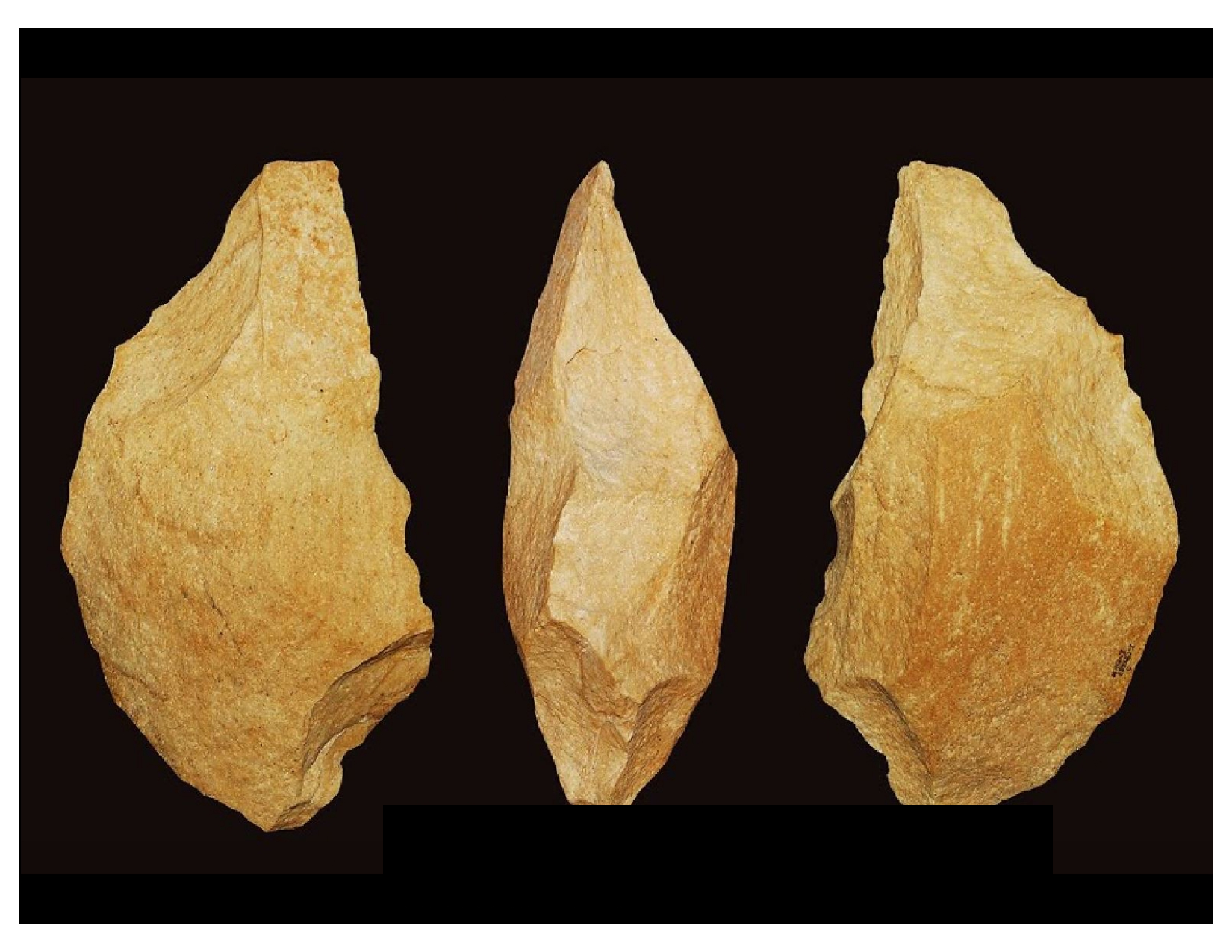
Handaxe
Jeon’gok-ri, Yeoncheon-gun, Gyeonggi Province
Paleolithic Period (600,000 - 8,000 BCE)
Stone tool with a tear-drop shape
We know it’s a stone tool because many like this were found, because of the type of rock, and because of the shape.
It marks hunters + gatherers and the capacity for speech.
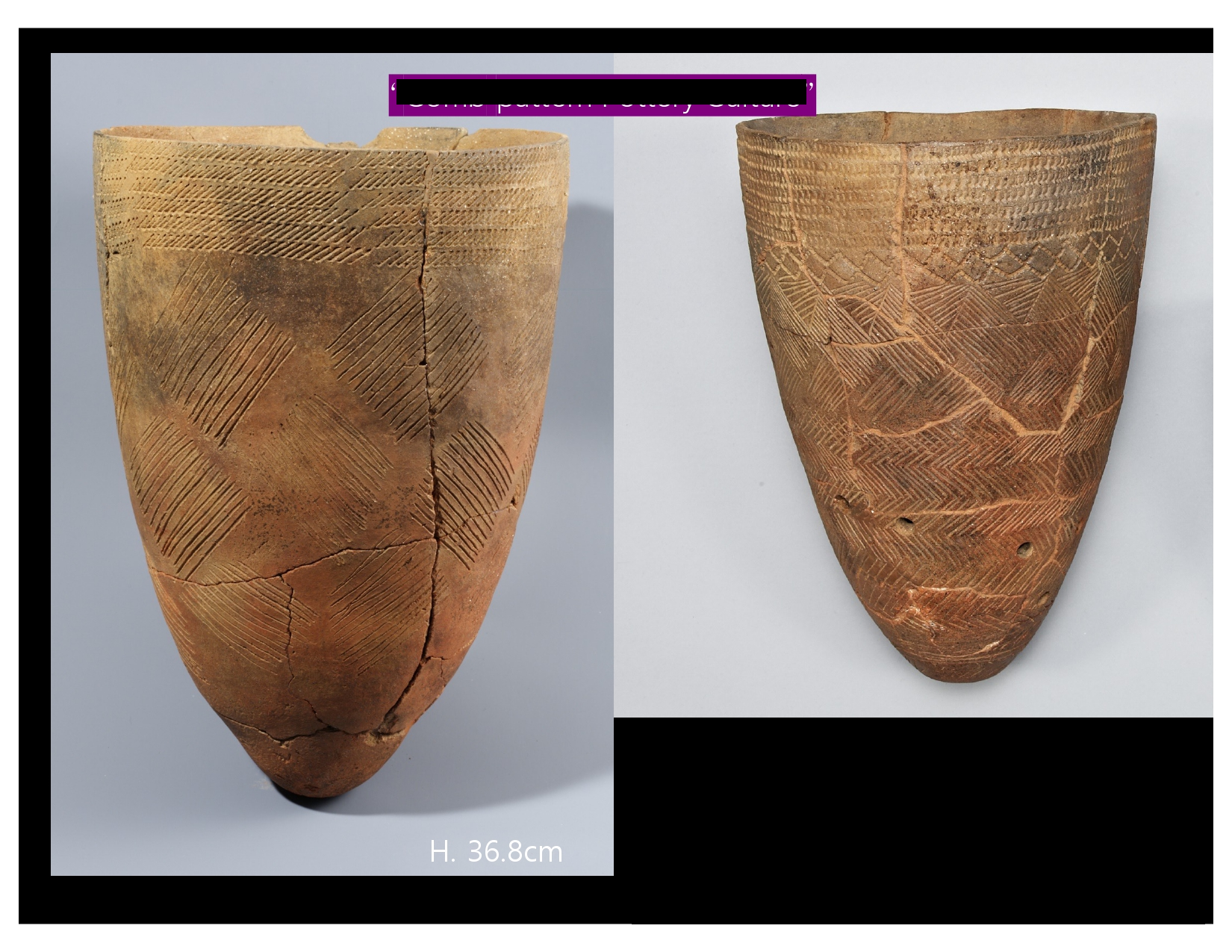
Jeulmun Pottery (Bitsalmunui Togi, Pottery with comb-pattern)
Amsa-dong, Seoul
Neolithic Period (7,000 - 1,000 BCE) (More specifically around 6,000 - 3,000 BCE)
Marks the beginning of art, and that patterned pottery came before plain pottery.
Geometric shapes, short horizontal lines, thick bands, long zig-zag patterns
Scholars proposed that the designs symbolize elements of nature, such as rain falling from the sky and landing on a field.
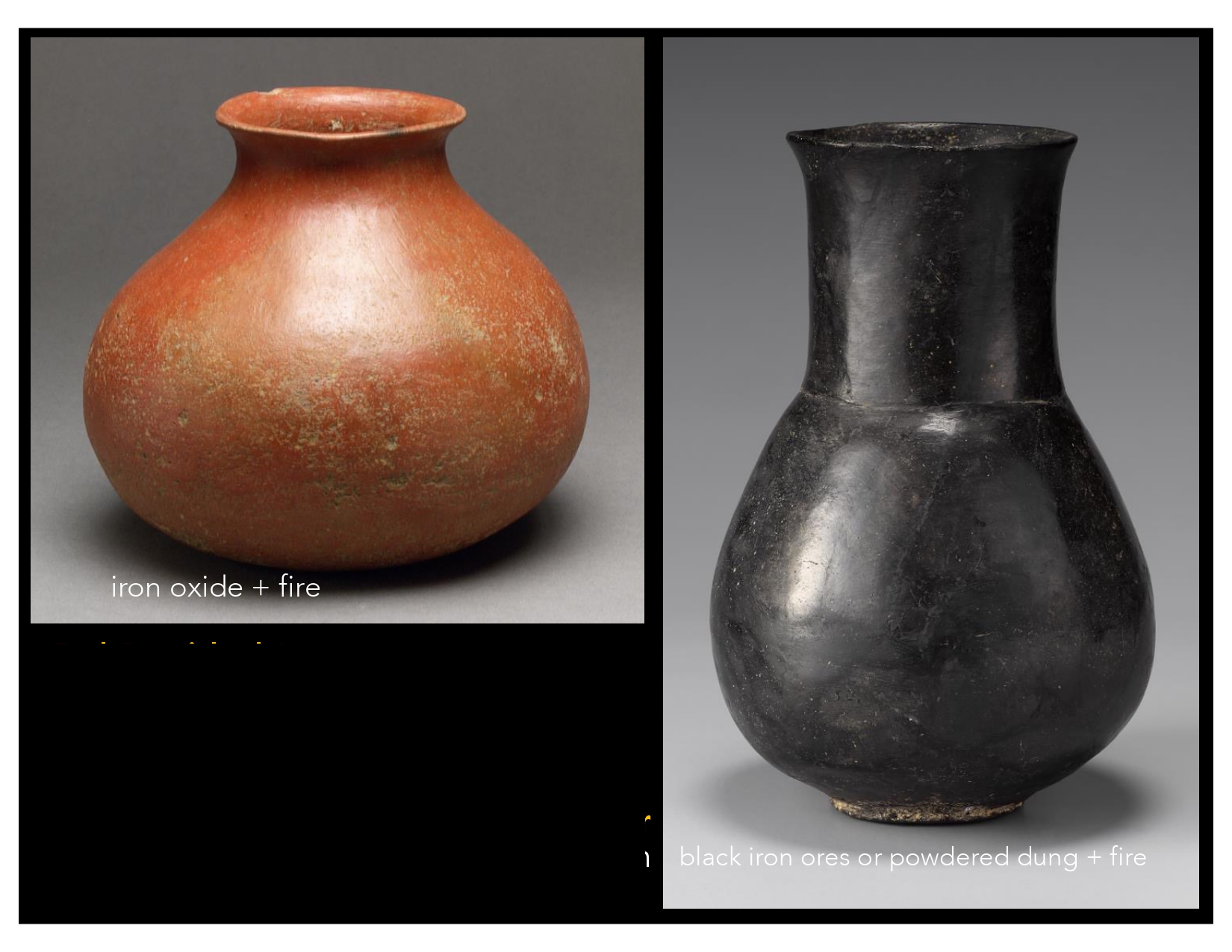
Red-Burnished Jar/Black-Burnished Jar
Daejeon
Bronze Age (1,000 - 300 BCE)
Mumun Pottery
Color red is from iron oxide + fire, color black is from iron ore/powdered dung + fire
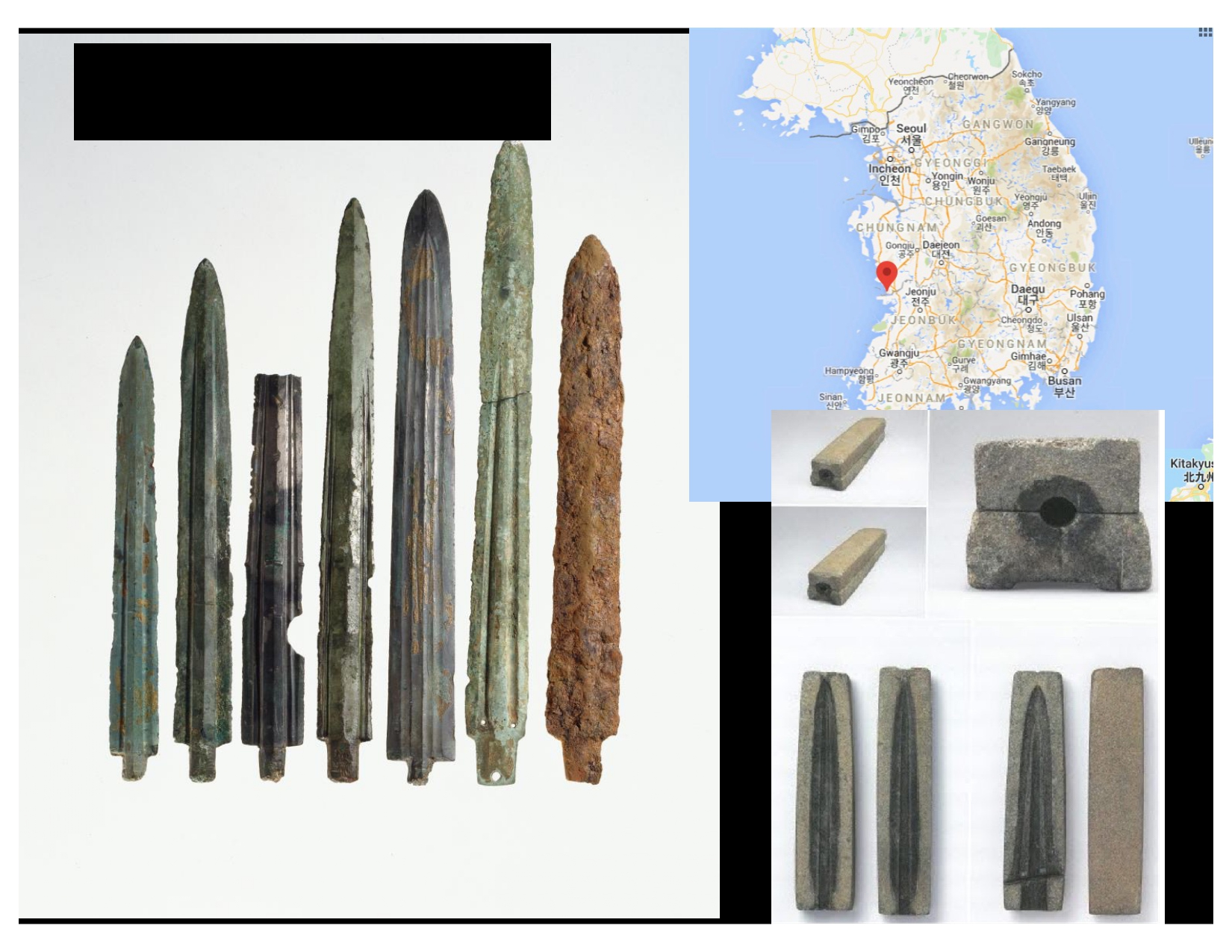
Korean-Type Bronze Dagger
Coast of Jeonju/Jeonbuk
Bronze Age (1,000 - 300 BCE); specifically 3rd century BCE
Slender with a straight blade as opposed to the curved blade on Liaoning-type bronze daggers
Bronze age division of importation vs creation

Bronze Mirror
Asan-si, South Chungcheong
Bronze Age (1,000 BCE - 300 BCE)
Mirrors were used in rituals, hung from the handles around the neck using cords. Shaman/chieftain would lead the ritual, and was used to strengthen religious and political purposes. Only afforded for a small amount of people.
Patterns have symbolic purposes.
Off-center handles distinctly Korean.

Bronze Ritual Artifact
Daejeon, South Chungcheong
Bronze Age (1,000 BCE - 300 BCE)
The purpose of the artifact was as a ritual object that was hung from a tree to mark community and prayer, as well as good harvest and prosperity.
Front plate has everyday scenes such as hunting, plowing, and harvest
Back plate depicts sotdae (guardian poles) that marked community and were used for religious prayers of peace, prosperity, luck, and fortune
Birds were believed to take ones soul up to heaven
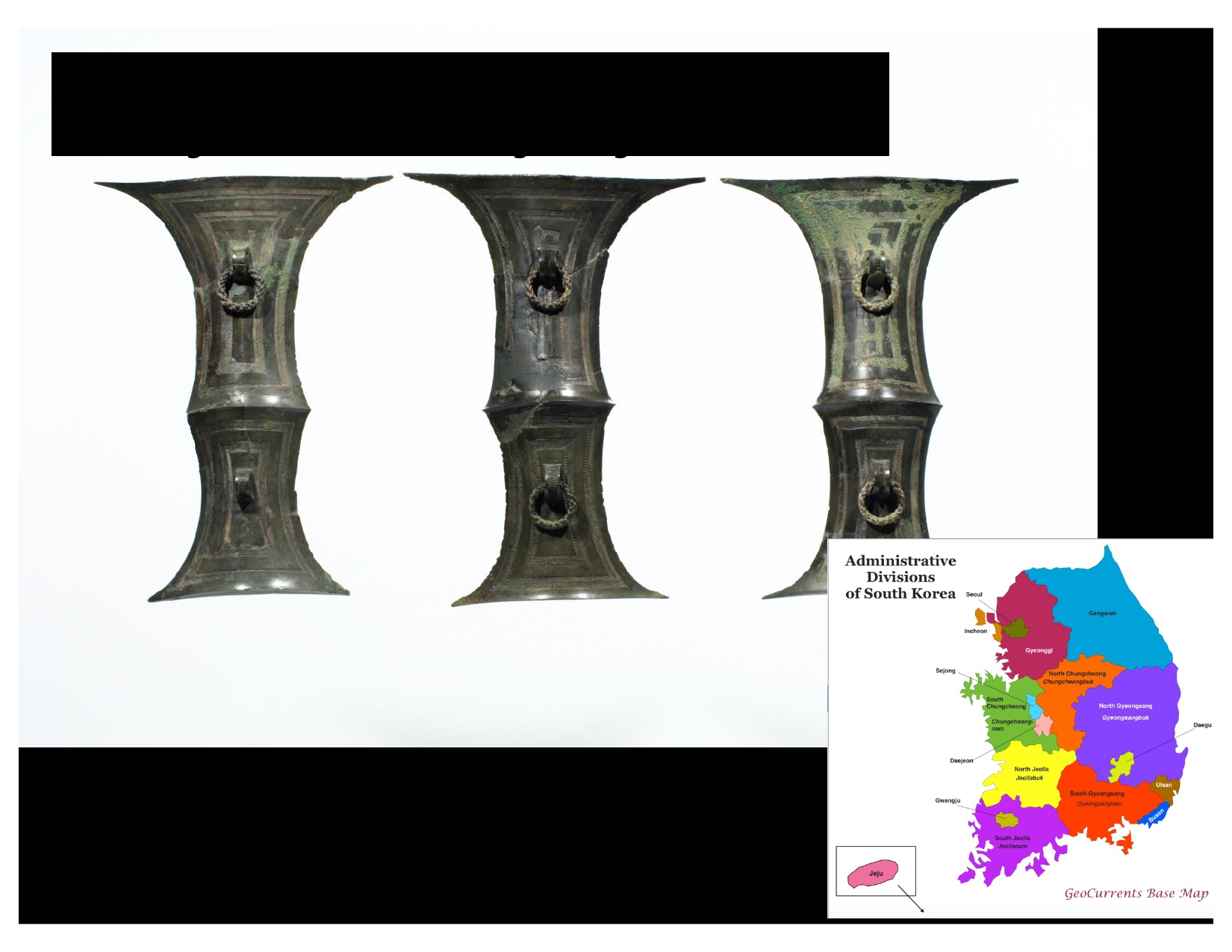
Bronze Split Bamboo-Shaped Artifact (Hilt)
Asan-si, South Chungcheong
Bronze Age (1,000 BCE to 300 BCE)
Last significant item of the bronze age, they signify the owner of the gravesite. Their role was a shaman, they had religious and political authority.
Deer symbol right above = shaman, evidence of borrowed culture from Siberia as well as meaning Theocratic society.
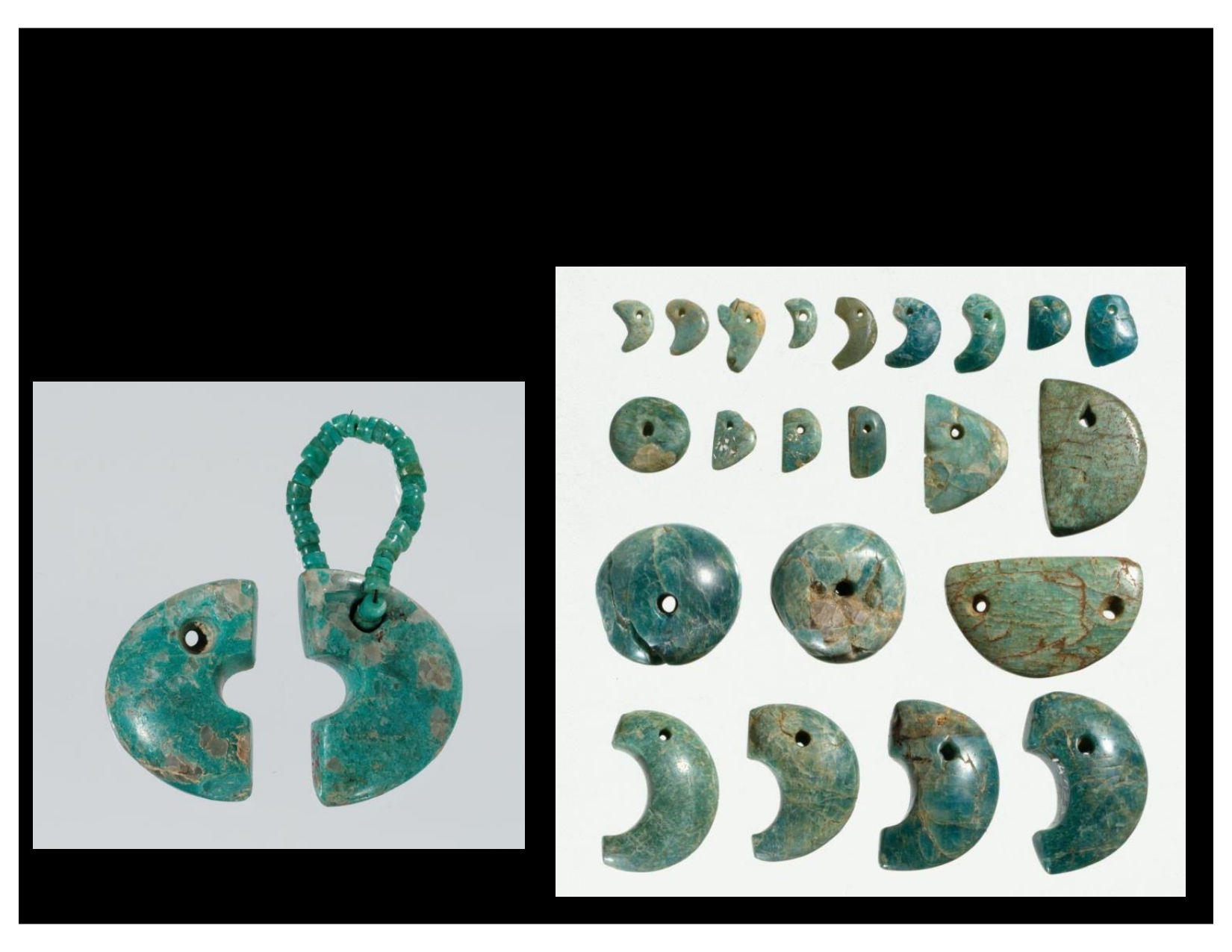
Gogok (Comma-Shaped Jade)
Daejeon, South Chungcheong
Bronze Age (1,000 BCE to 300 BCE)
Found in Korea from Bronze age up until 6th century CE
Gogok was found in Siberia and Northeast Asia, supporting theories of Scytho-Siberian influence. Used as decorative details or earrings.
Most jade objects were found in burial sites of higher status people.
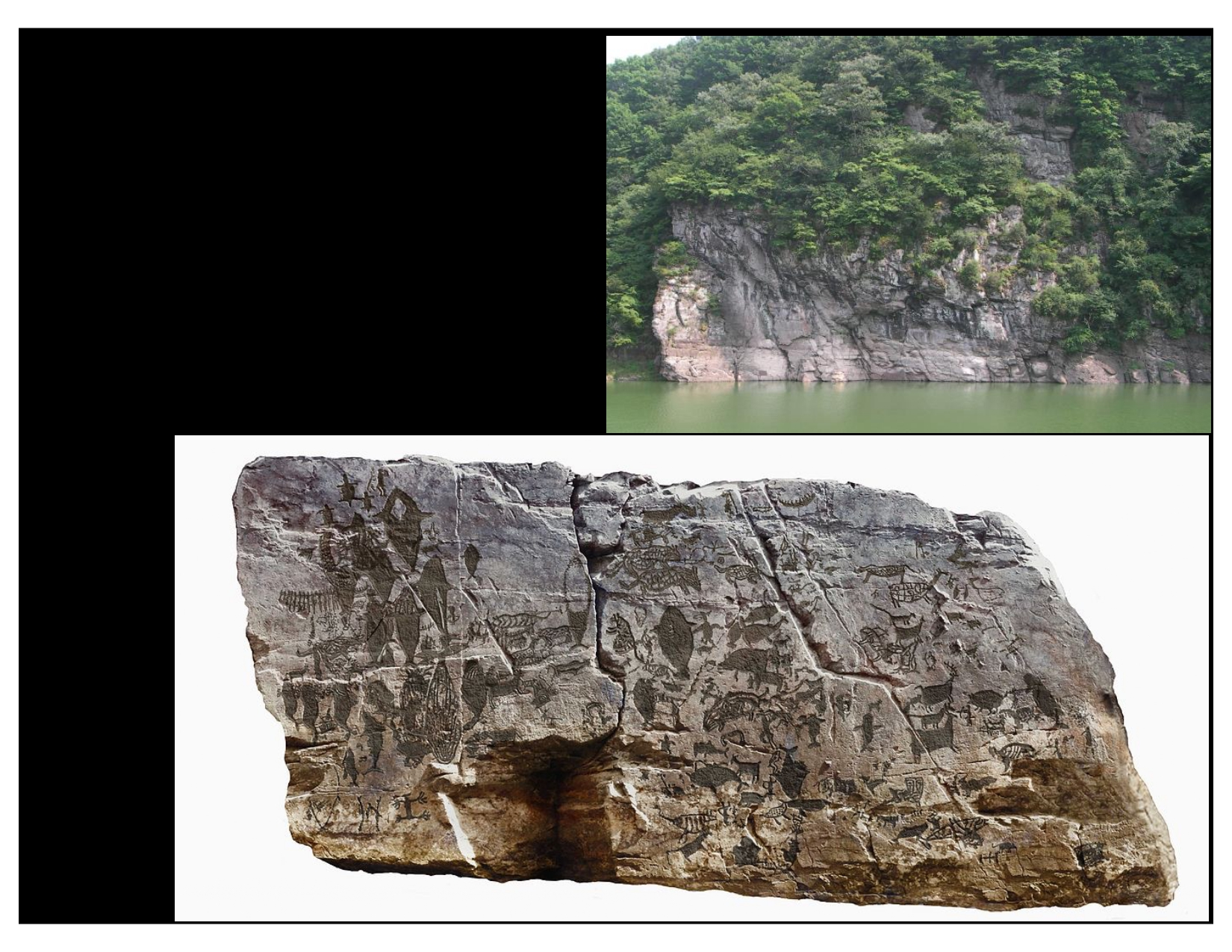
Bangudae Petroglyphs
Ulju-gun, South Gyeongsang Province
Late Neolithic - Early Bronze Age (Probably around 1,000 BCE)
Made by pecking, grinding, and engraving
Very likely depicting the process of whaling, as well as various depictions of other animals. Hunters and animal pens are present. A desire to have more.

Cheonjeon-ri Petroglyphs
Pohang, North Gyeongsang Province
Bronze Age (1,000 - 300 BCE)
Shamanistic worldview, depictions of abstract shamans, deer (siberian influence), and talisman charms
Also includes Chinese characters that were written later than everything else
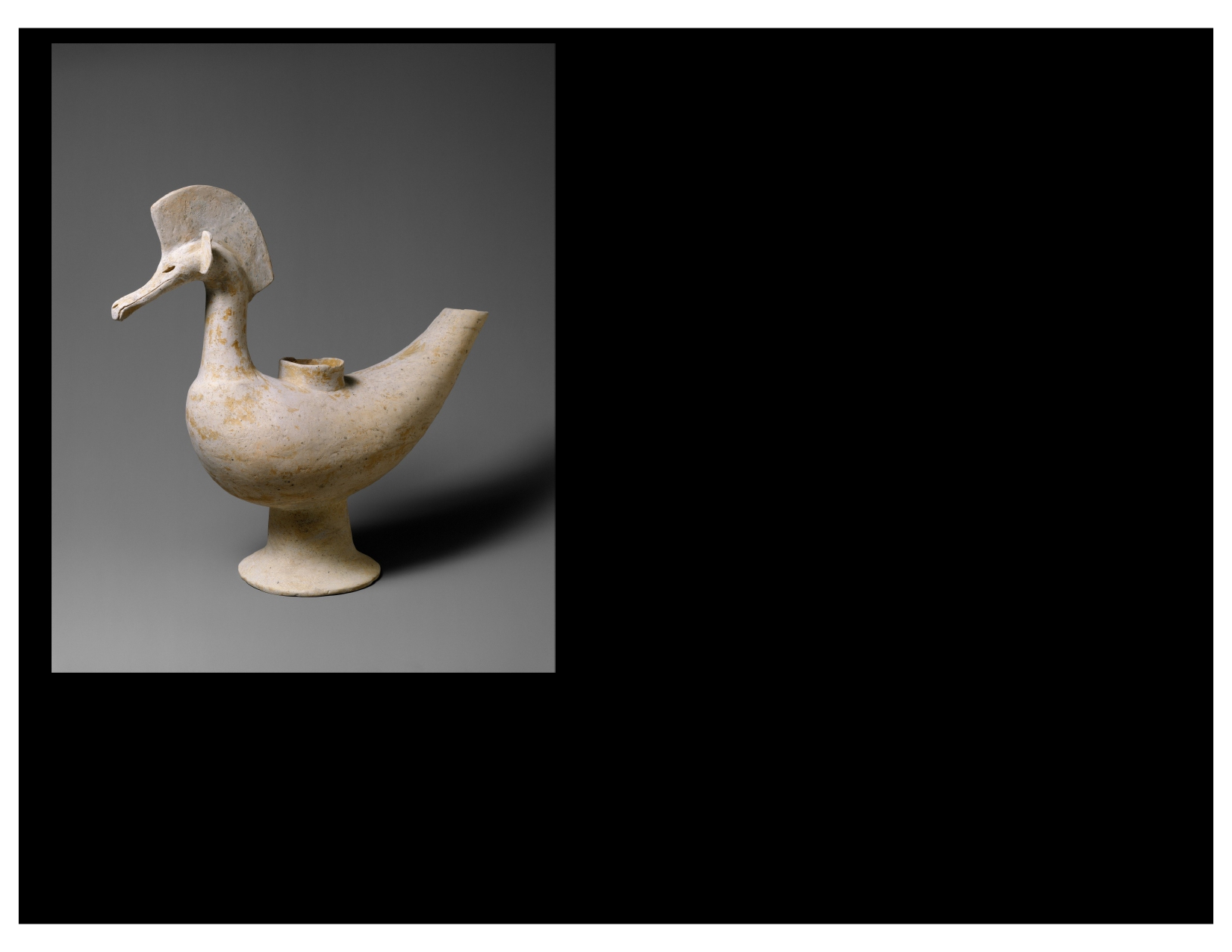
Bird-Shaped Vessel
Proto-Three Kingdoms (late 2nd - 3rd CE)
Unknown location
Marks the appearance of sculptural objects
Appearance of footed vessels, too, which is borrowed from Chinese bronze vessels
Vessel for wine
Bird-shape associated with funerary practices, as birds are seen as a vehicle that carry souls to the land of immortals. Likely influenced by exchanges with China
Kyongjil
Stoneware
Hard like iron, a lot stronger than wajil pottery
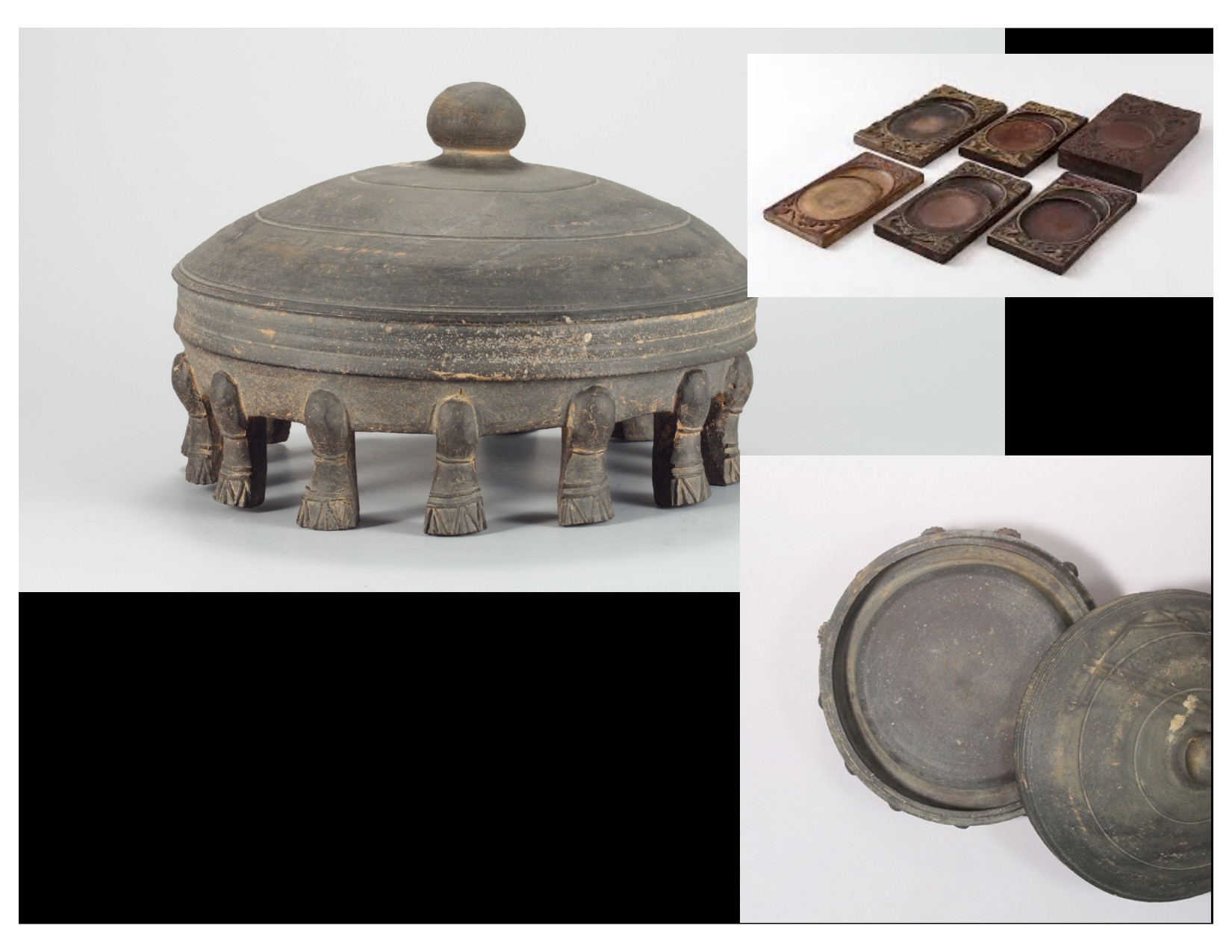
Inkstone
Mongchon Earthen Fortification
Baekje, 6th - 7th CE
Traditional tool used in East Asian painting and calligraphy. Ink sticks are ground against the stone, with a little bit of water.
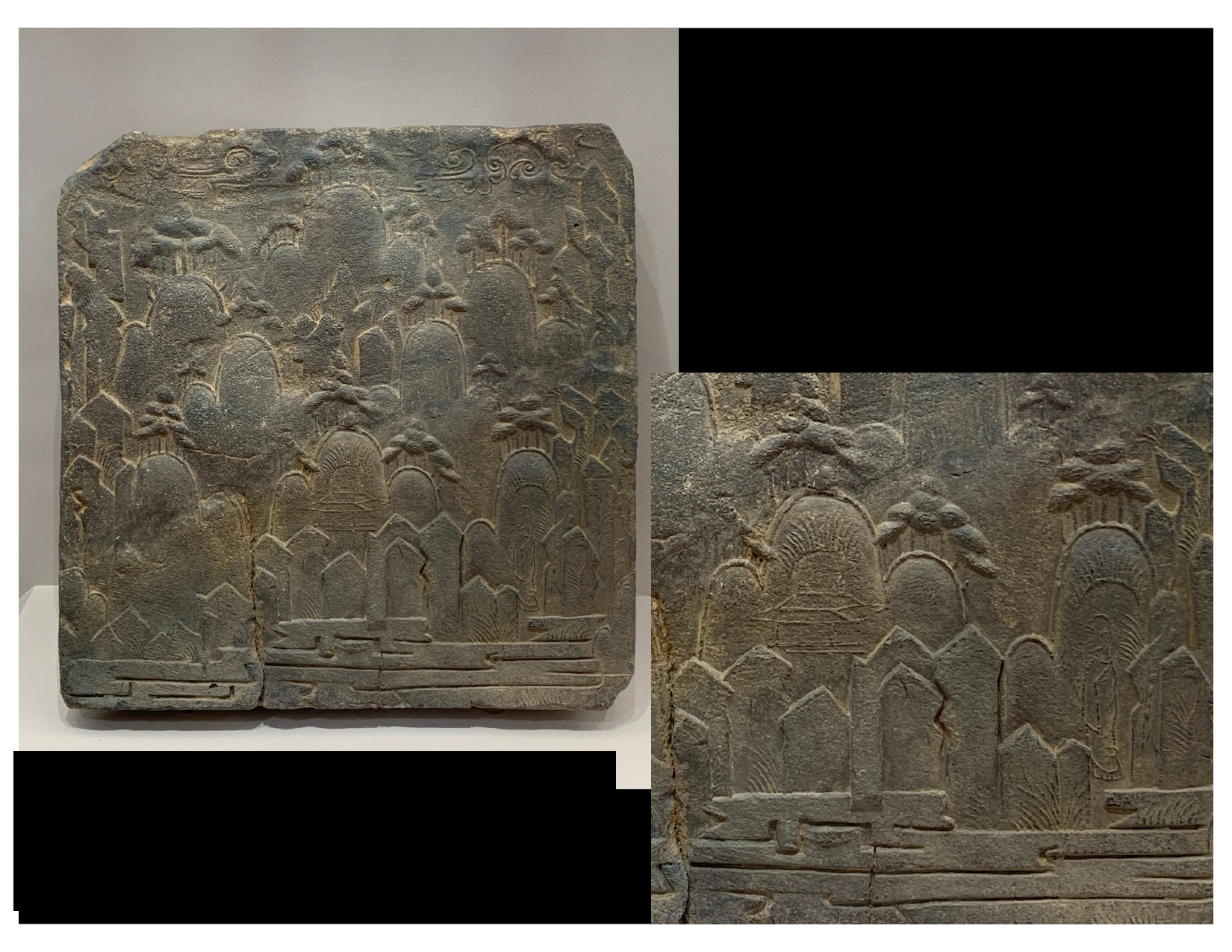
Earthenware Tile with Landscape Design
Buyeo, Chungcheong Province
Baekje, 7th CE
Very first object to show pictorial cultural representation
Possible representation of Mt. Peng-Ki, Taoist in nature
Shows different types of mountains, a daoist temple, and a daoist monk/hermit who has achieved eternal life.
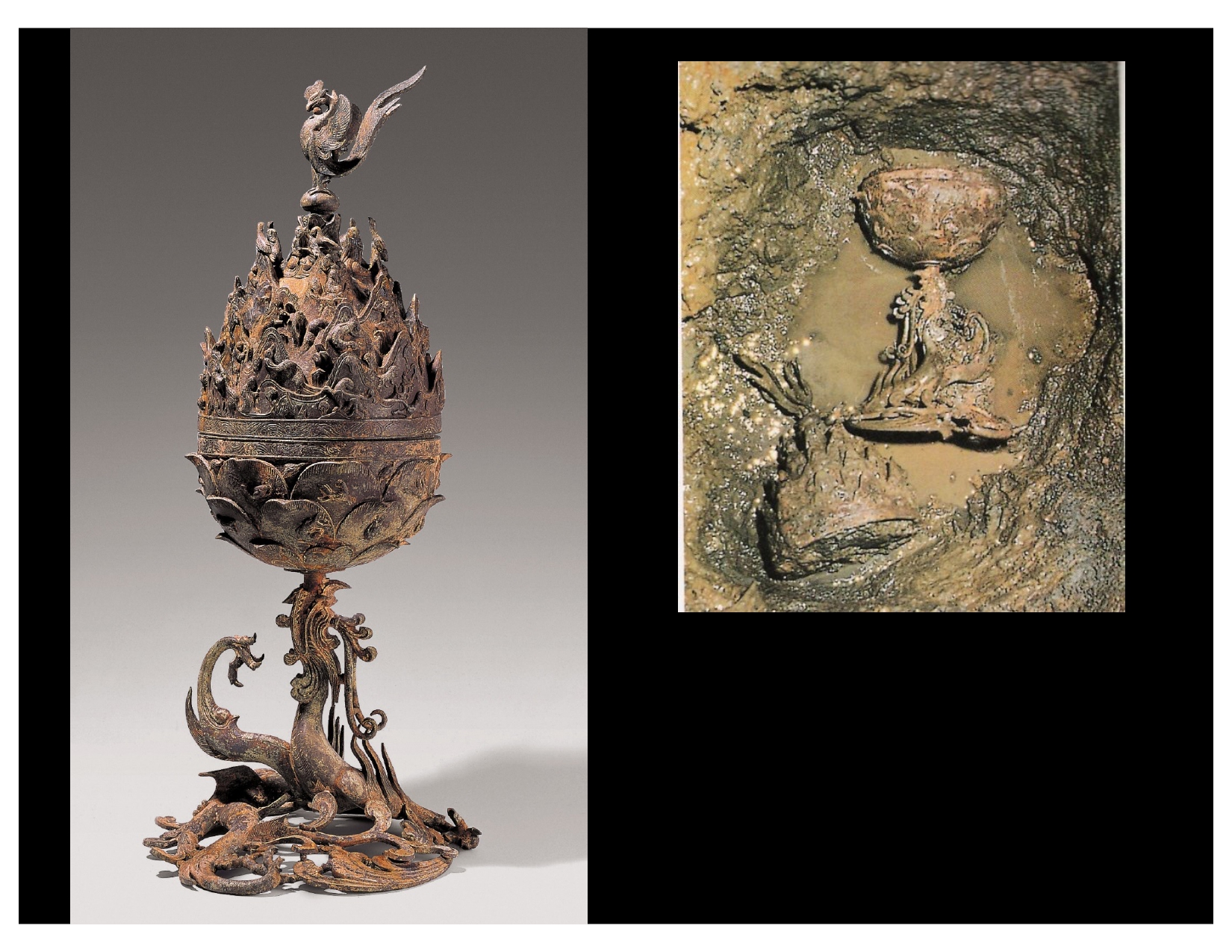
Great Glit-Bronze Incense Burner
Buyeo, Chungcheong Province
Baekje, 6th - 7th CE
Excavated from an ancient temple site, it was likely used in Buddhist rituals.
From bottom to top: dragon stand → lotus petal bowl with animals engraved on each petal → mountain-shaped lid with more animals engraved + monks playing traditional instruments at the top → phoenix at the top
Animals featured: birds, fish, humans, imaginary guardians
39 animals featured in mountains
Dragon lifting lotus flower from water
Instruments: accordion, goto (japanese string instrument), drum, flute/pipe, diwa (japanese string instrument)
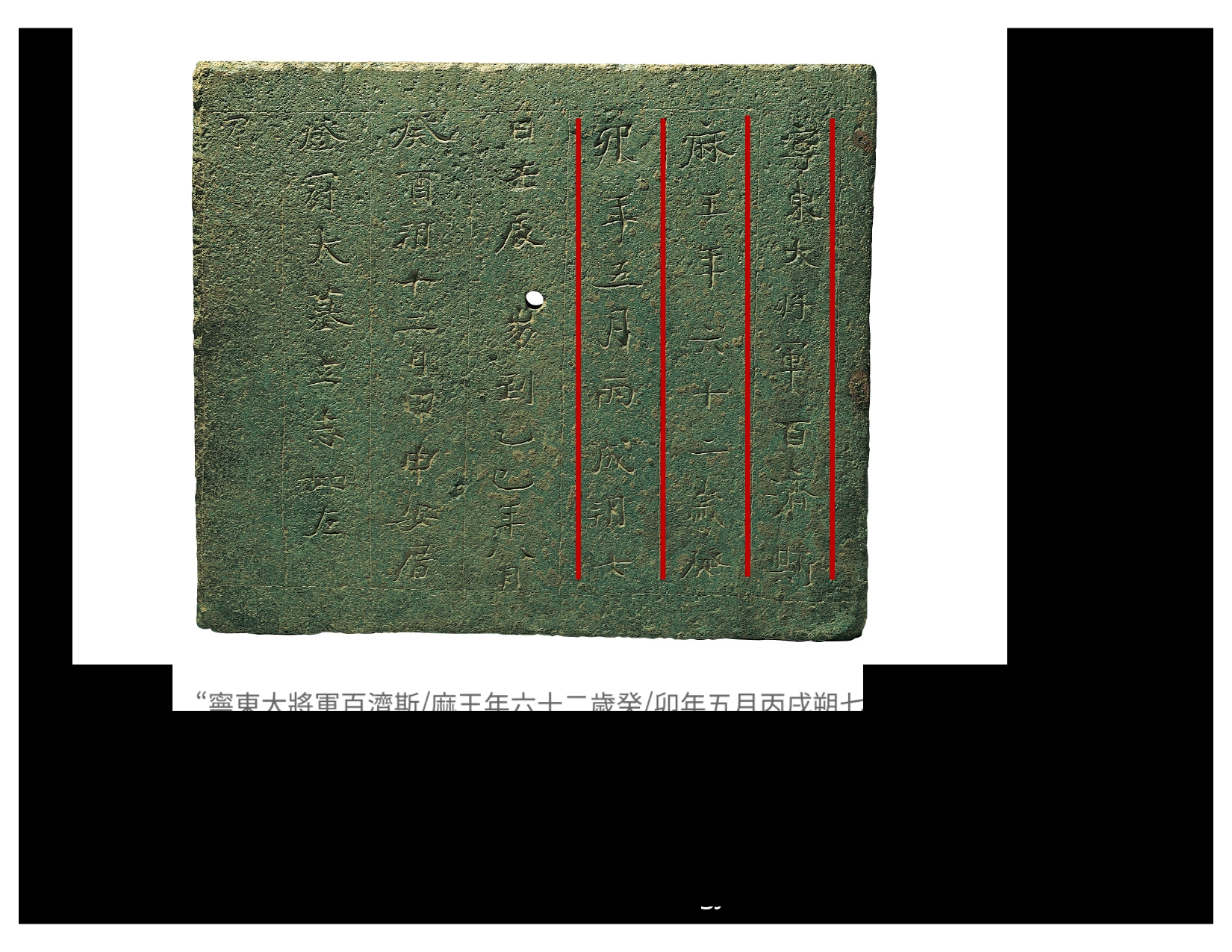
Buried Memorial Tablet
Tomb of King Muryeong
Gongju, Chungcheong Province
Baekje Dynasty, 6th CE
Epitaph plaque, written in Chinese as all official documents were at the time. Contract with Earthly spirits for purchase of burial grounds, which is a Chinese custom.
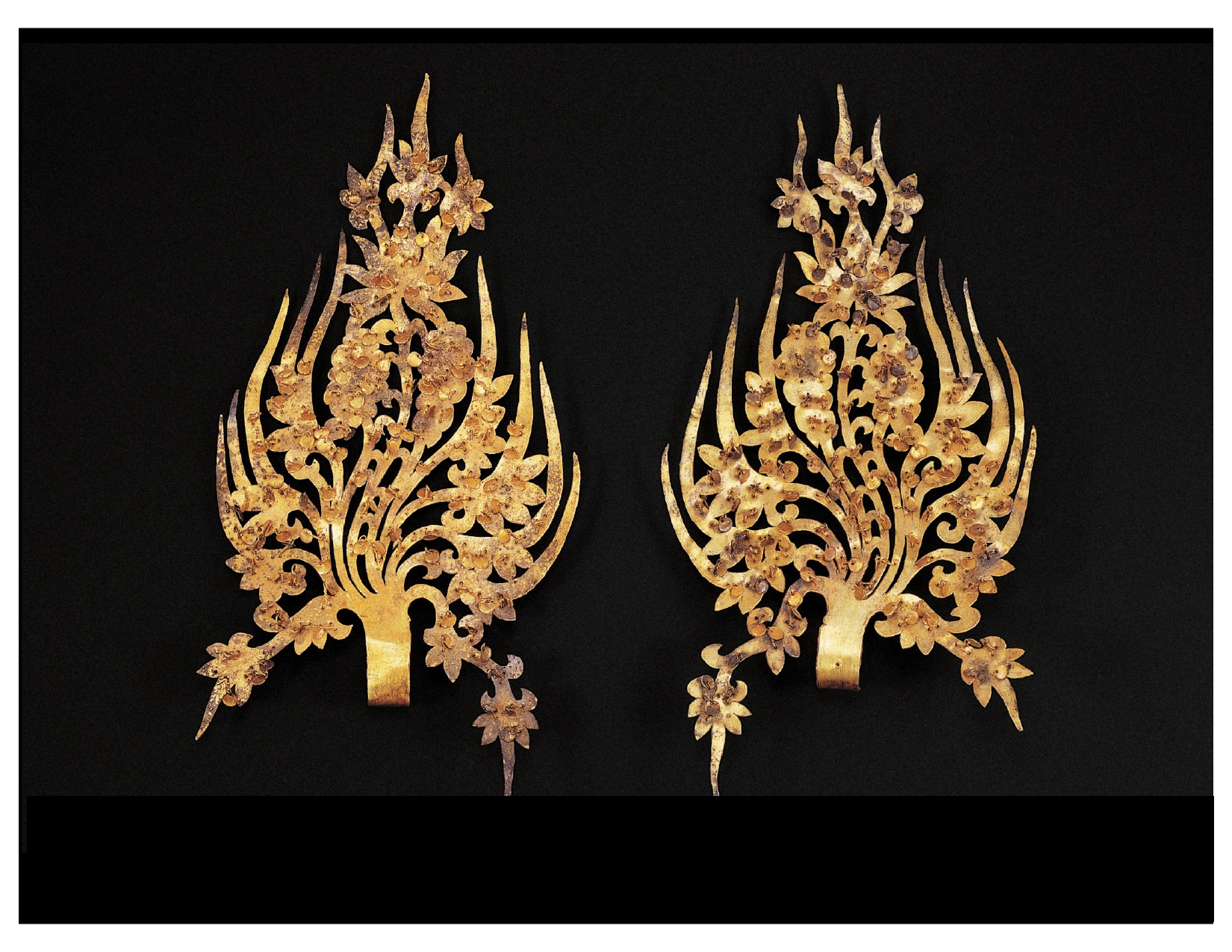
Golden Diadem Ornaments of King Muryeong
Gongju, Chungcheong Province
Baekje, 6th CE
Flamed shaped with shimmering details. Found resting near the King’s head; worn by ears.
Flame shape likely comes from Buddhist influence
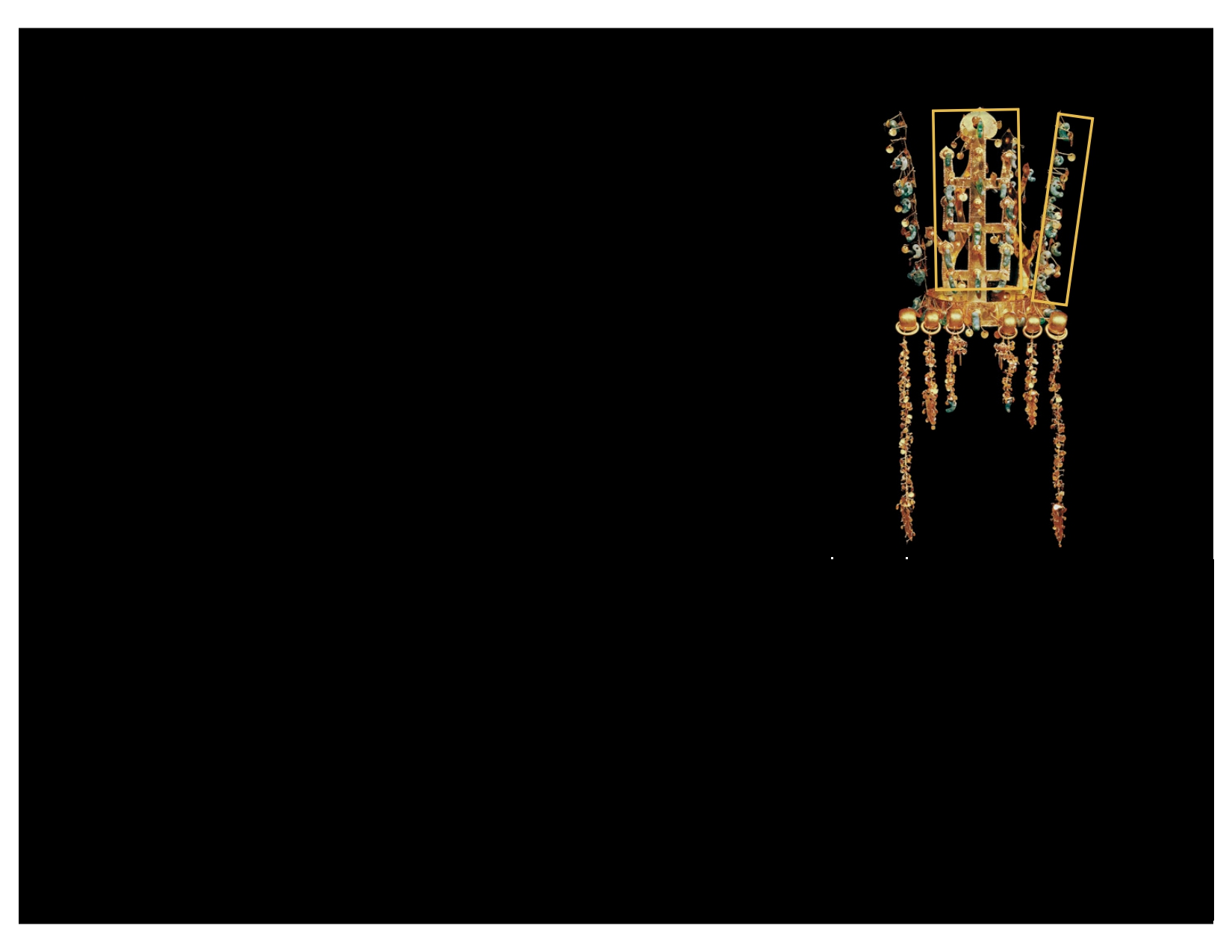
Crown
Hwangnam Tomb 98 in Gyeongju
Silla Dynasty, 5th Century CE
3 tree-like vertical forms, axis-mundi linking heaven and earth (shamans moved between the two using tree branches)
2 antler-like prongs, evidence of cultural influence as well as a symbol of the fertility of Earth
Gogok symbolizing ripe fruits hanging from trees
Crown similar to headgear found in Russia, connection to Siberian Shamanism
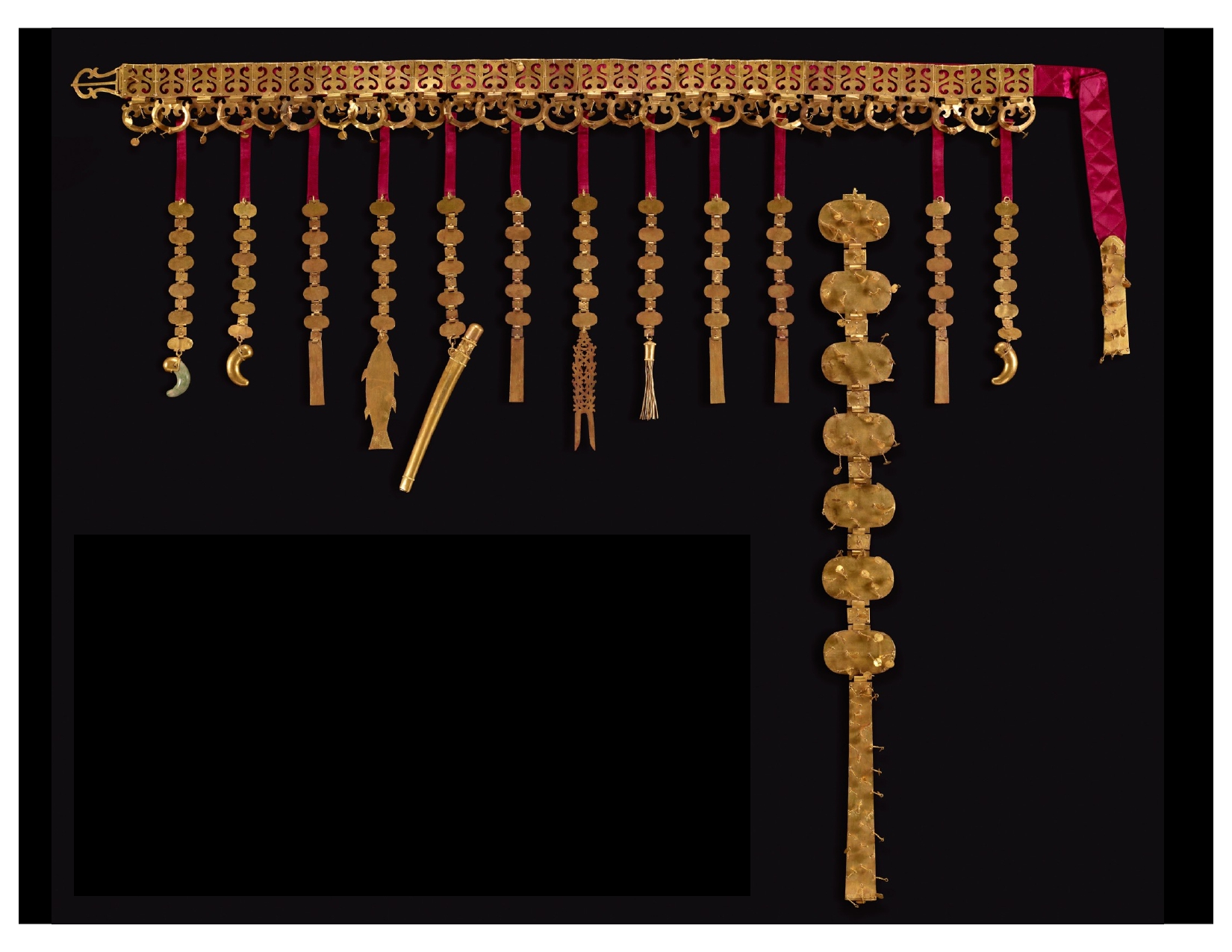
Gold Wait Belt
North Mound of Hwangnam Tomb in Gyeongju
Silla Dynasty, 5th Century CE
28 linked gold plates, 13 hanging pedants. 6 pendants with plain tablet, 3 with gogok, 1 with fish, 1 with sword, 1 with tweezers, 1 with a status object. Heart shaped rings attached to each plate.
Connection to Siberian culture
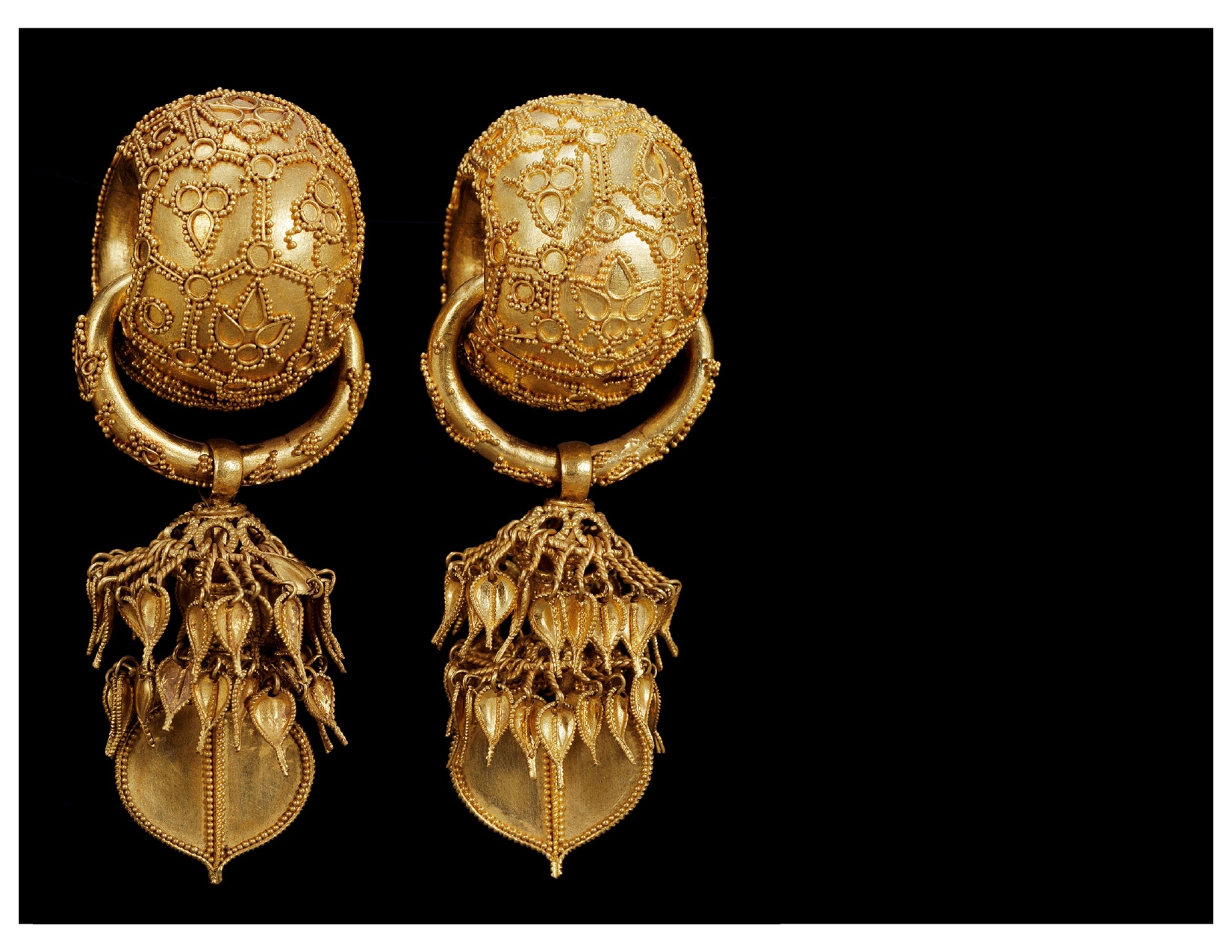
Gold Earrings from Bubudong Tomb
Bubudong Tomb, Gyeongju, Gyeongsang Province
Silla Dynasty, 6th CE
Granulation, demonstrates development of technique and technology
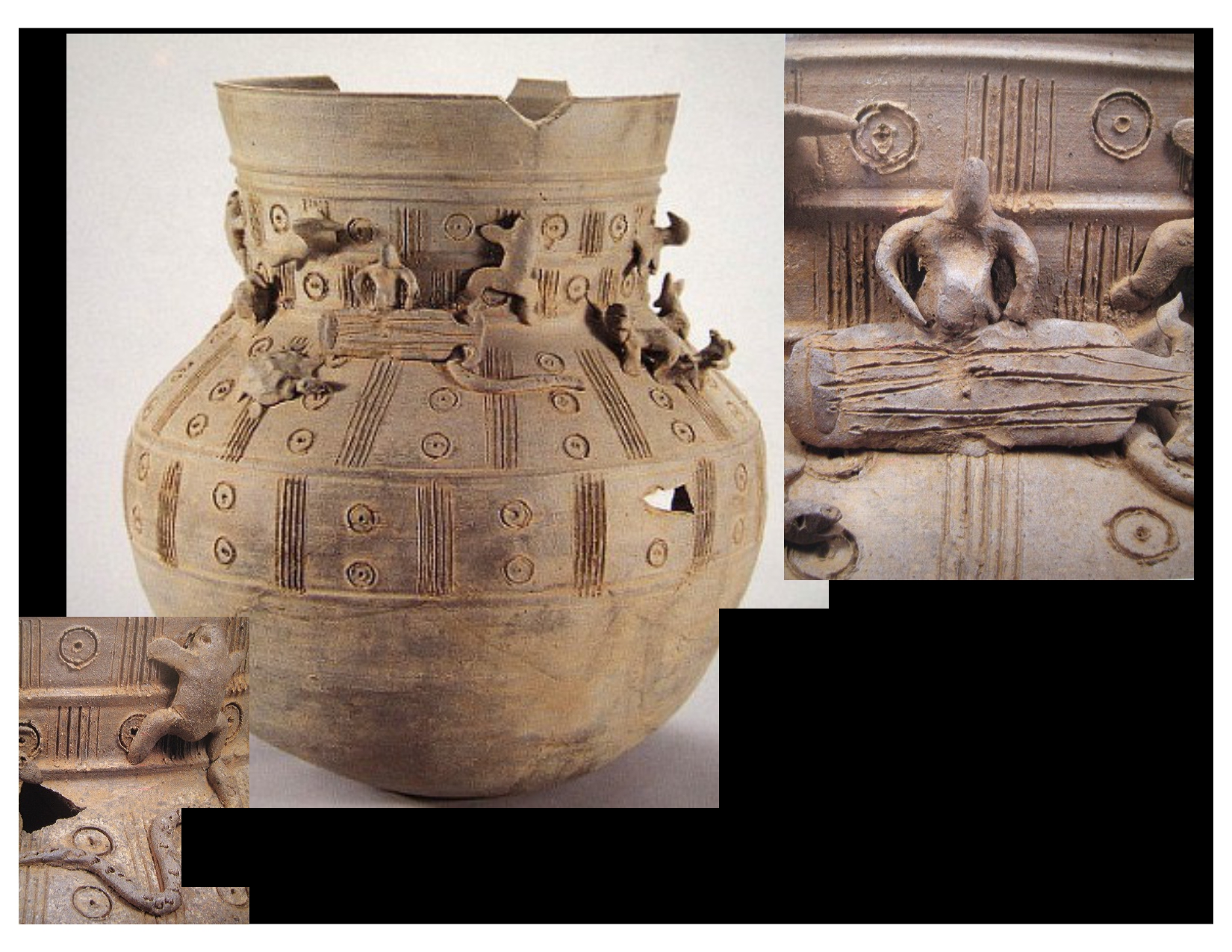
Large Jar with Applied Figures
Gyeongju
Silla Dynasty, 5th - 6th CE
Kyongjil
Various figures depicted along the base of the neck including: a man playing a zither (traditional stringed instrument), bids, frogs, turtles, snakes (trying to eat the frogs), and people boning
Made to wish for good harvest and fertility
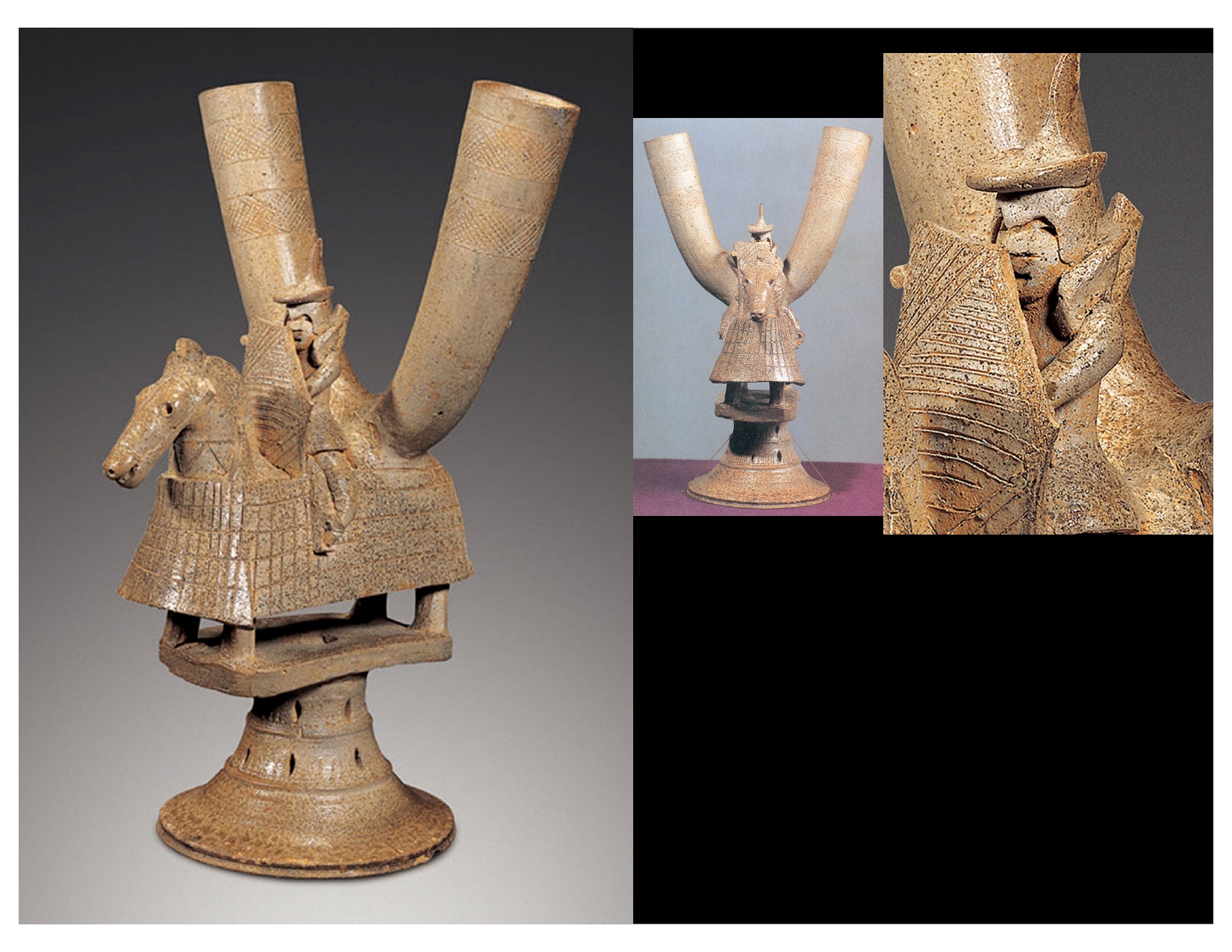
Vessel in the Shape of a Mounted Warrior
Gaya Kingdom, 5th - 6th CE
Gimhae, Gyeongsang Province
Features a warrior atop an armored horse, with two long horns coming out of the back. Horse stands on a stand, with small openings at the bottom. Scale armor created using strings for the patterns.
Definitely for ritual use.

West Side Room of Anak Tomb No. 3
Dated to 357
Located in Pyongyang Region
Multi-chambered
Know that he is the deceased master because he’s wearing a Baekna (white silk) crown with a black inner headdress and he holds a Zhuwei fan in his right hand.
Dong-shou is the master portrayed, allegedly a Chinese general that fled to Pyongyang and died there but many art historians argue that because of this portrait, he must’ve been a king.
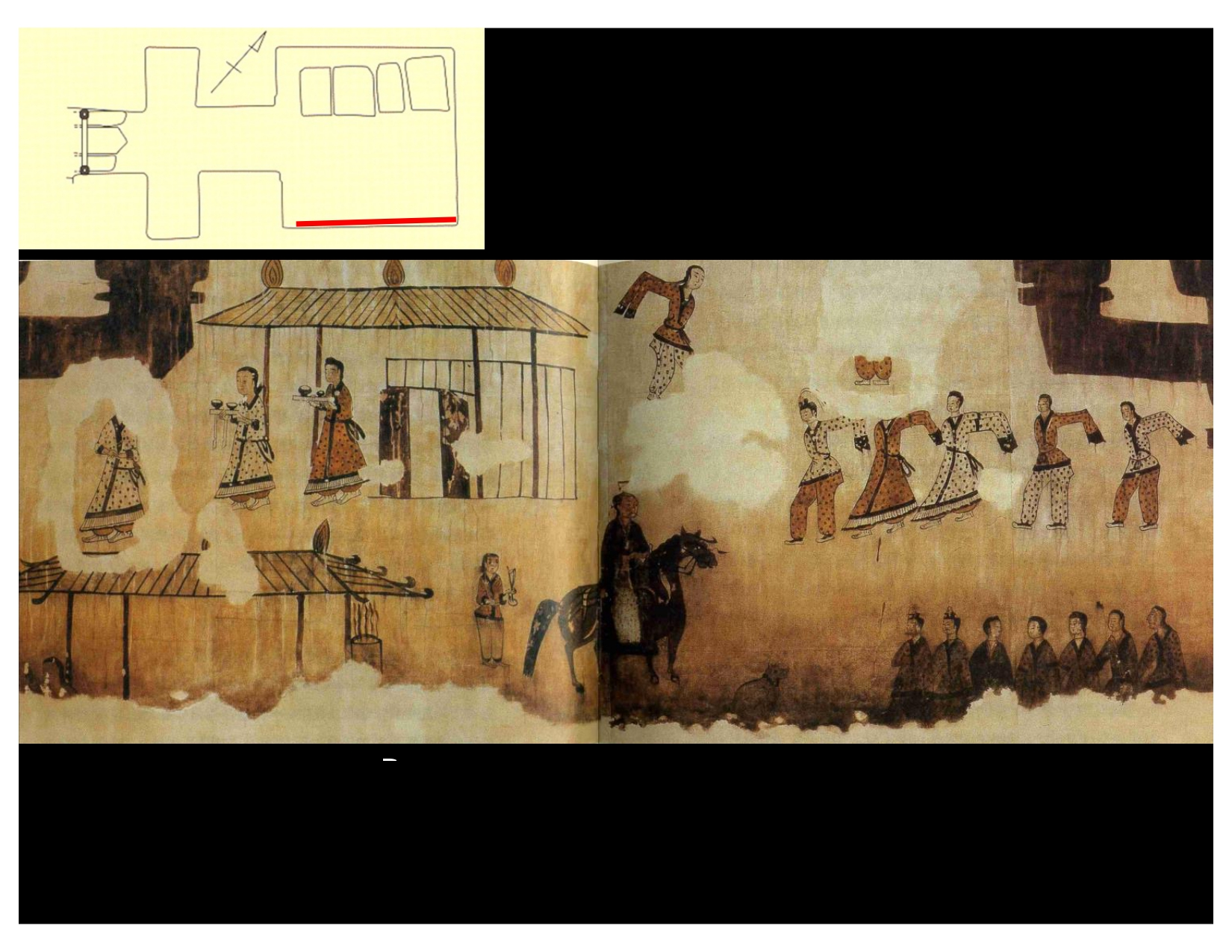
Dancing Scene along East Wall of Muyong-Chong Tomb
Mid 5th CE, Ji’an Region
Two Chambers, the “dancing tomb”
Lack of perspective, distance is depicted vertically so the top scene is further away and the bottom scene is closer.
Depicts 5 male and female dancers dressed in traditional Goguryeo clothing, men wearing tied jackets and loose pants while women are wearing wrapped robes over loose pants.
Also depicts guests being greeted and servants bringing out food
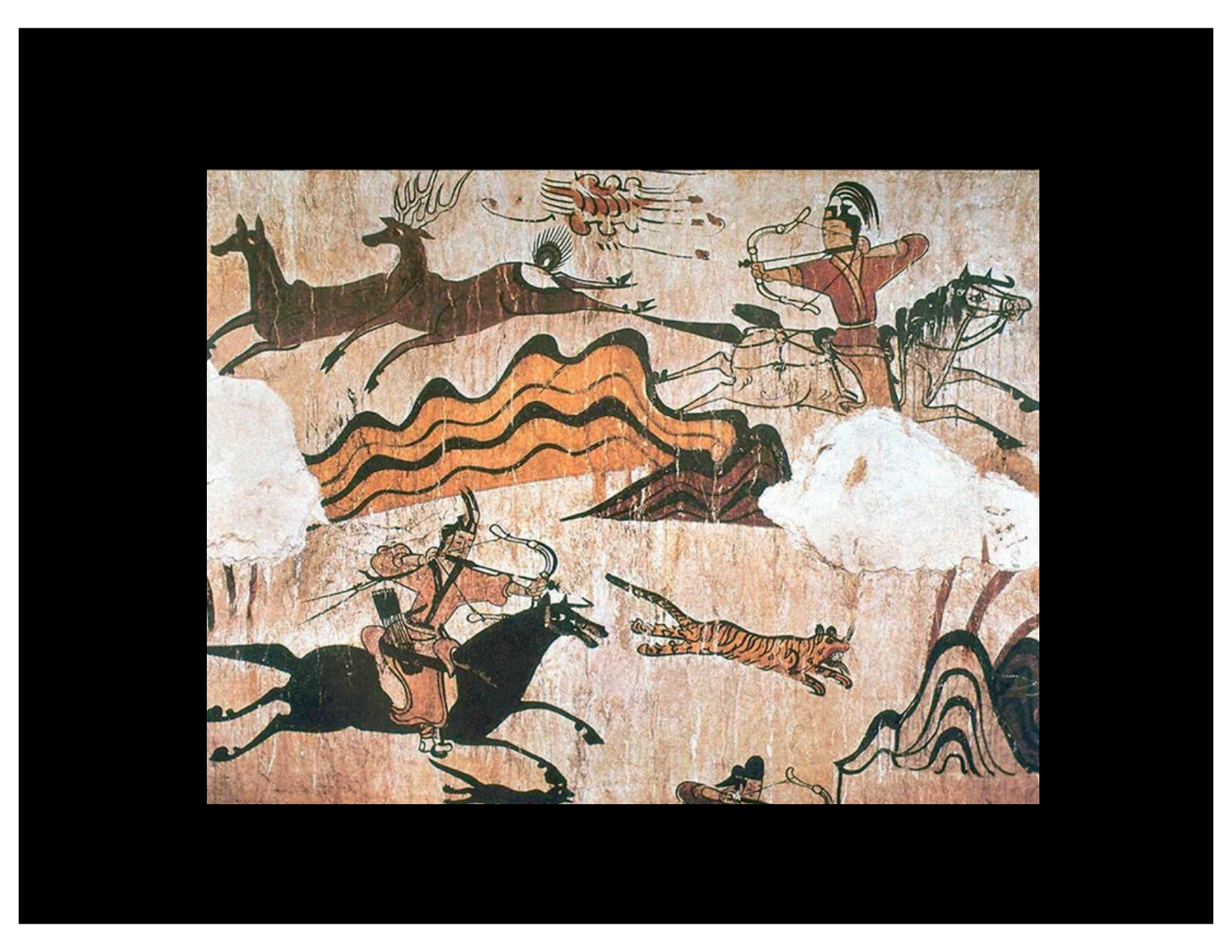
Hunting Scene alongside West Wall of Muyong-Chong Tomb
Mid 5th CE, Ji’an Region, Two Chambers
Depicts hunters on horseback, armed with bows and arrows chasing deers and tigers throughout the mountains.
Also depicts a “Parthian Shot”
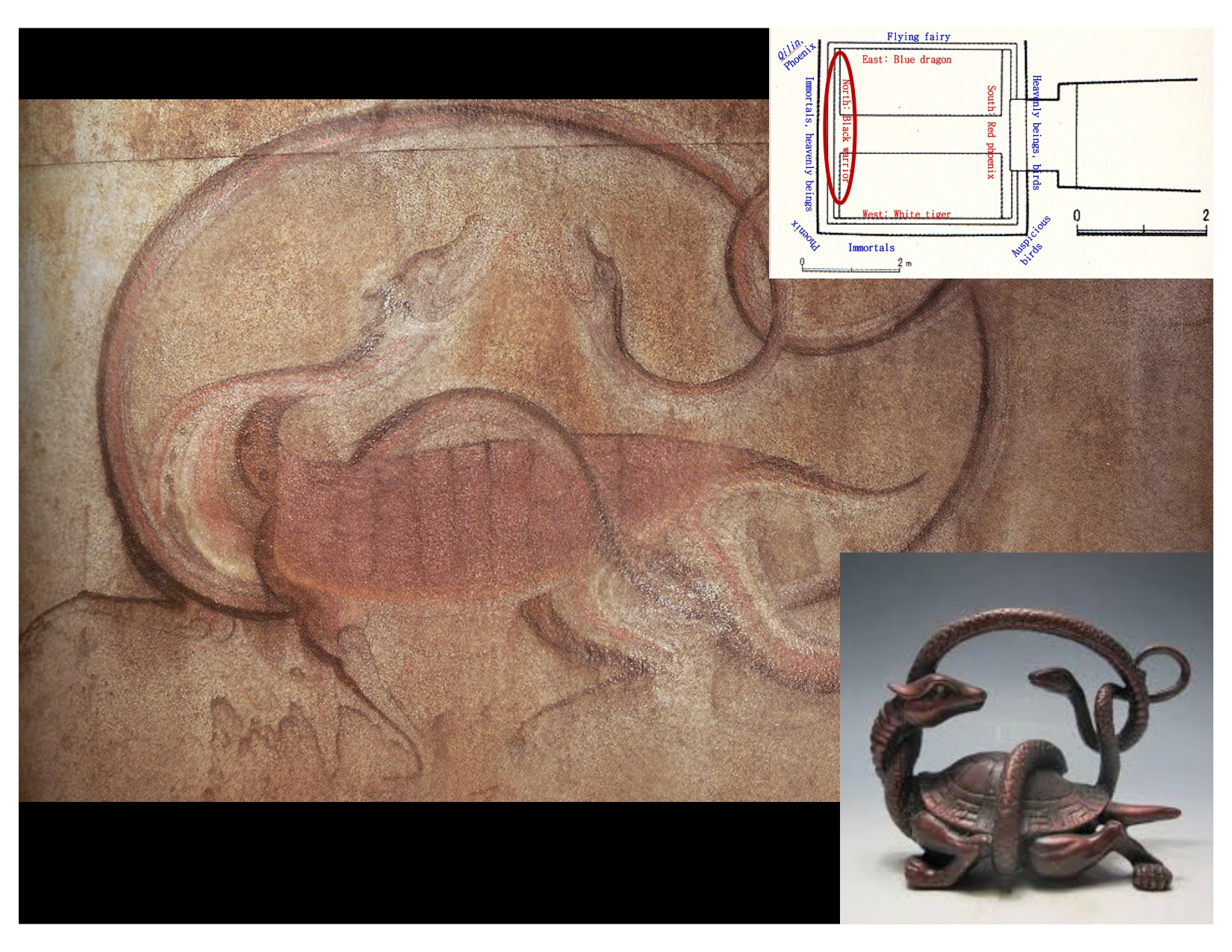
Black Warrior of Gangseo Daemyo
North Wall
Late 6th CE, Pyongyang Region, One Chamber
Depicts both a turtle and a snake

Red Phoenix of Gangseo Daemyo
Late 6th CE, Pyongyang Region, One Chamber
Two on either side of the entrance
South Wall
Auspicious Symbol
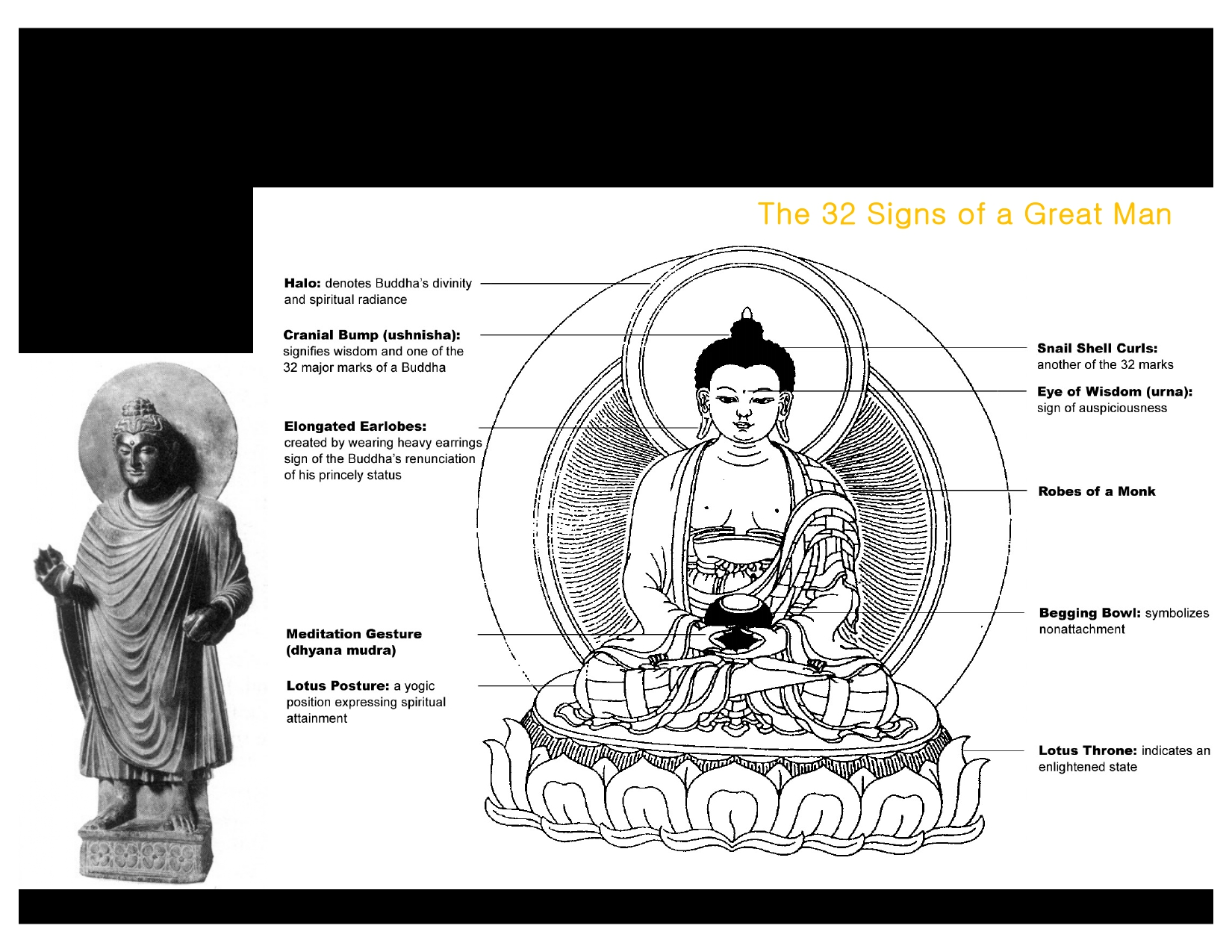
32 Signs of a Great Man
Halo (nimbus) - denotes Buddha’s divinity and spiritual radiance
Cranial Bump (ushnisha) - signifies wisdom
Elongated earlobes - sign of renunciation of princely status
Snail Shell Curls
Eye of Wisdom (urna) - sign of auspiciousness
Robes of a monk
Halo around body (Mandola)
Begging Bowl - nonattachment
Lotus Throne - enlightened state
Lotus Posture - yogic position expressing spiritual attainment
Meditation Gesture - dhyana Mudra
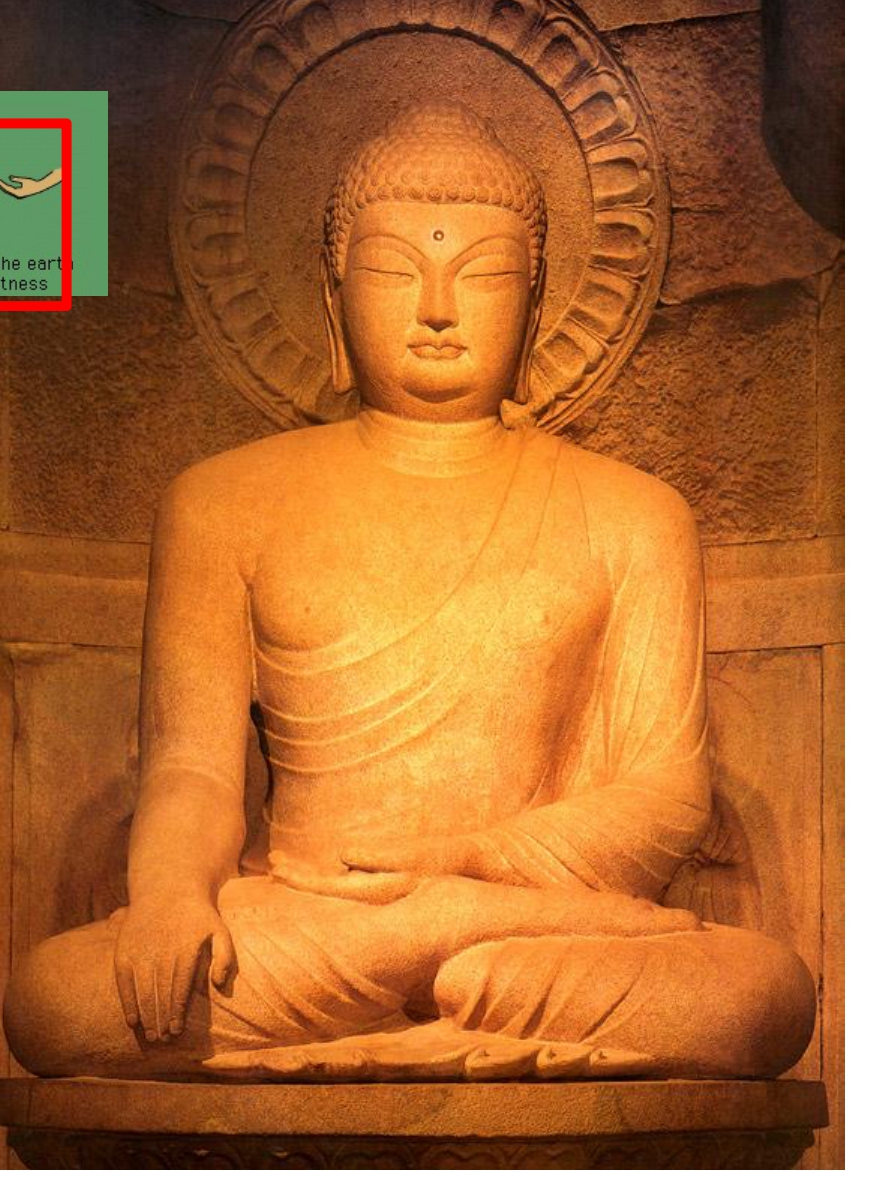
Bhumisparsha - mudra
Gesture of earth-touching
Calling the Earth to witness
Buddha touched the Earth with the gesture and it shook, scaring away the demons sent to seduce and kill him by Mara, king of demons
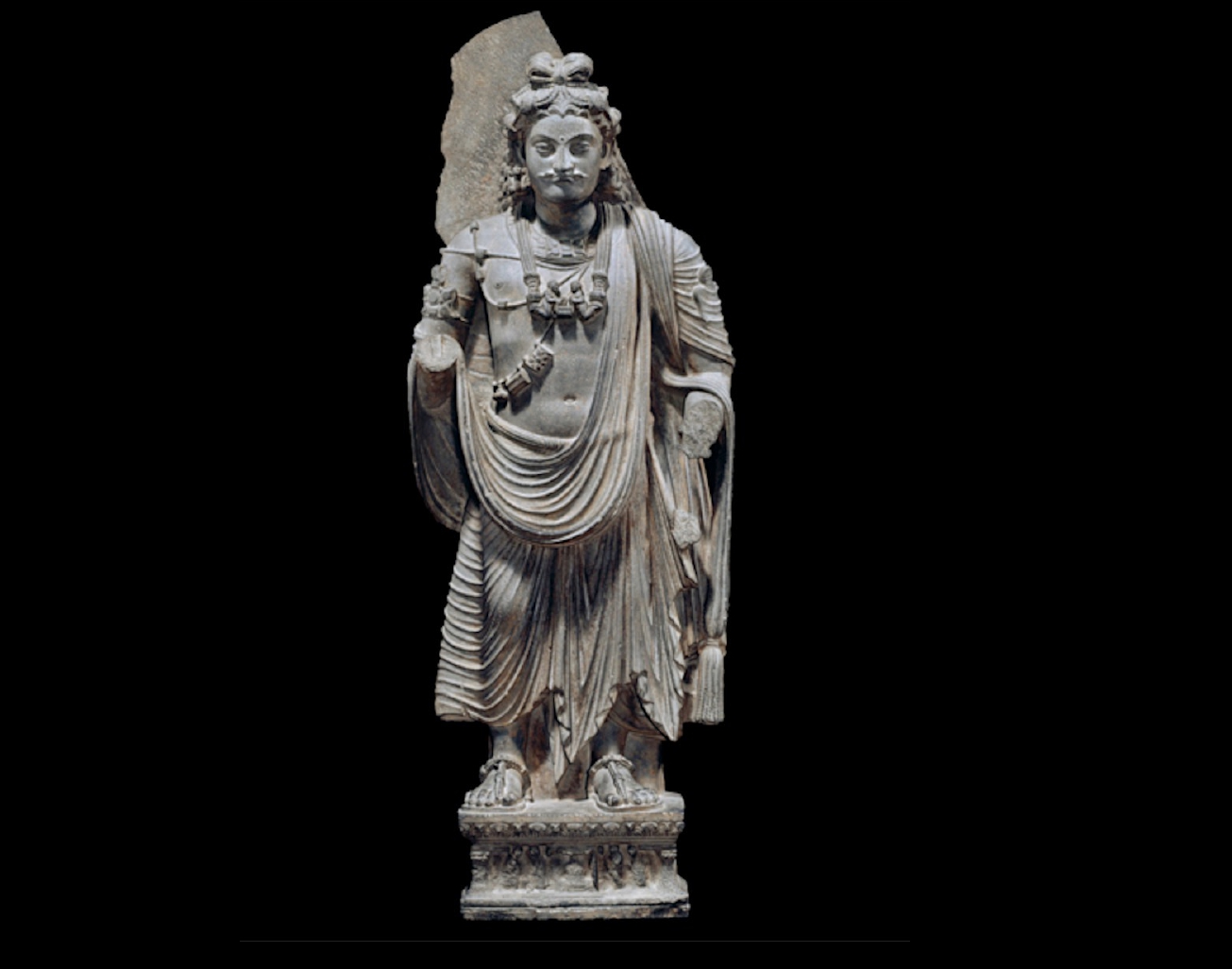
Bodhisattva Maitreya
Kushan Period
3rd CE
Gandhara
Appearance distinguishes itself from Buddha via hair being different, body ornaments, and draped robes
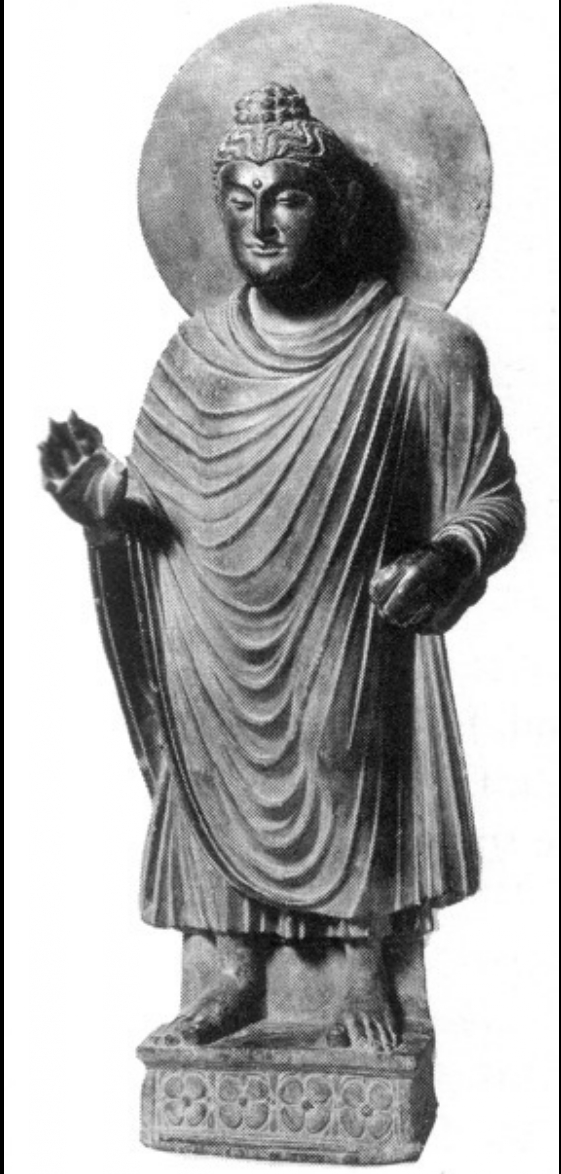
Gandhara Style
Gandhara
2 - 3rd CE
Influenced by Greco-Roman Style, after Alexander the Great conquered a lot of West Asia, bringing Western sculpture traditions over.
Contrapposto Pose, similar facial expressions
Bodhisavatta
Bodhi meaning enlightenment, Savatta meaning beings
Enlightened beings who have put off entering paradise in order to help others attain enlightenment.
Avalokitesvara
Bodhisavatta of compassion, attendant of Amitabha the Buddha of Western Parade / the Pure Land.
Often shown with 1,000 hands and 11 heads, has many eyes, Kanon = Japanese names
Vairocana
The embodiment of the Buddhist concept of Emptiness/the center of the Universe.
Hinayana
aka Theravada Buddhism. Seen as a lesser, more primitive version of Buddhism. Interested only in saving the self through self-awakening, through self discipline and meditation. Practiced in Southeast Asia.
Aniconic tradition, meaning representing Buddha more through symbols and concepts. As he’s a god, they felt it’s improper to represent hima s a human.
Chakra Dharma
The turning of the wheel of the law, Buddha’s first sermon and message of Enlightenment. Delivered at 35.
The Four Encounters
Buddha encountering a sick man, an old man, a dead man, and a holy man at 29. Basis of why he left, the four universal sufferings.
Jeon’gok-ri Site
Paleolithic Era artifacts found here (600,000 - 8,000 BCE).
Located in Yeoncheon.
Amsa-dong Site
Neolithic Period artifacts found here (8,000 BCE - 1,000 BCE))
Small settlements of hunters, fishers, and foragers near rivers and coastal areas.
Semi-subterranean dwellings. First efforts at farming.
Goindol (Dolmen Tombs)
Bronze Age tombs.
Over 40,000 in Korea, making up for 40% of the global total.
Northern Type (Ganghwa, completely above ground)
Go-board (Southern Type, digs in underground)
Capstone Type (above ground like the Northern type).
Goin (supported/propped) + dol (stone). Believed tombs were built for people of a higher rank.
Granulation
Decoration technique in which small metal spheres (grains/granules) are fixed onto metal surfaces without solder, act as decor.
Parthian Shot
Made by the Parthians, an ancient Iranian people. While performing a real or feigned retreat at full gallop, the horse archers turn their bodies and shoot at their pursuers.
Mudra
Symbolic or ritual gesture in Buddhism. Can be used to figure out what event in Buddha’s life the artist is depicting.
Dispelling Fear
Dhyana (meditative)
Dharmackra (turning the wheel)
Bhumisparsha (gesture of earth-touching)